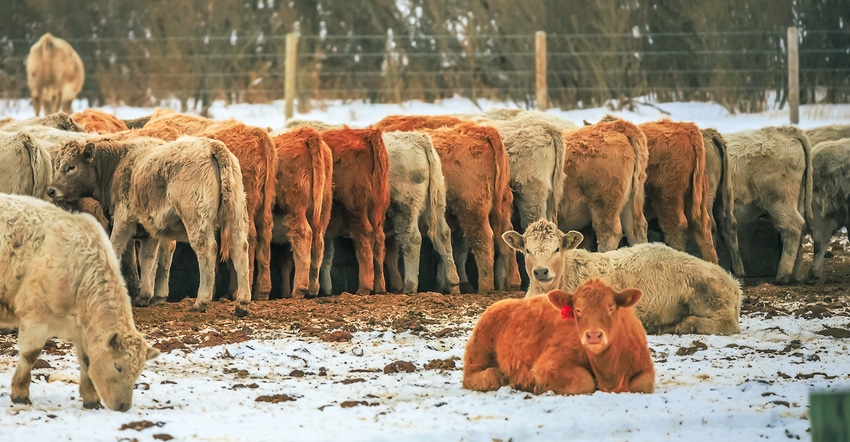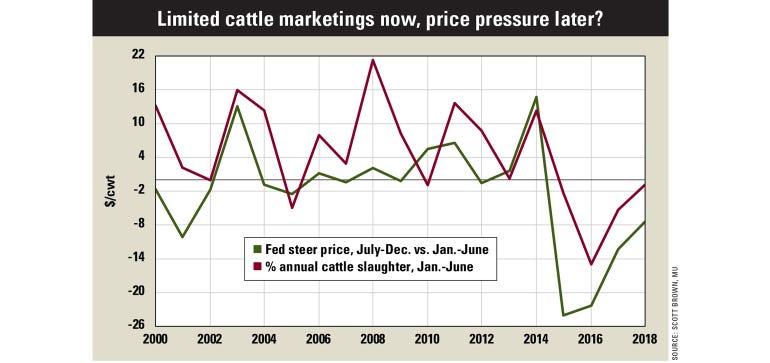March 6, 2019

Harsh weather conditions prevailing across many important cattle-feeding areas are not only affecting beef output, but also could be setting the industry up for price pressure in the second half of 2019.
Average daily weight gains for steers and heifers in the last quarter of 2018 were lower than both 2017 and the 2012-to-2016 average, according to Kansas feedlot performance data from Kansas State University. The winter weather in January and February makes it likely that feedlot performance has continued to struggle in Kansas, as well as in other major feedlot states.
The effects of reduced feedlot performance and weather-related marketing disruptions also are showing up in cattle slaughter and weight data.
Problems in the feedyard
For the first eight weeks of the year, total federally inspected cattle slaughter was only 1% above the similar time frame in 2018. Although the past couple of weekly observations are defined as estimated and subject to future revision, the story will remain that fewer animals are being marketed now than will be the case later in the year.
Weights also have been affected. Live cattle weights are down more than 13 pounds for the first six weeks of the year relative to 2018. Dressed heifer weights are 11.5 pounds lower, with dressed steer weights off by 5.7 pounds.
Combining slaughter numbers and yields leaves beef production only 0.2% higher year to date, compared with the recent USDA projection of 2.8% beef production growth in 2019.

BY THE NUMBERS: The table shows how fed steer prices reacted after a harsh winter cycle.

Price dip on horizon
While it is wise to be wary of anyone else’s projections, the fact that virtually all market analysts expect the annual USDA Cattle Report (released Feb. 28 after this article’s submission) to show a larger 2018 calf crop and higher numbers of animals on feed to begin 2019 points to a larger gain in beef production this year than what has occurred thus far.
If a larger percentage of annual steer and heifer slaughter occurs later in the year because of the industry being forced to play catch-up after harsh winter weather conditions, how will prices be affected? The accompanying figure shows how fed steer prices have fared in the second half of the year relative to the first half, depending upon the allocation of total steer and heifer slaughter throughout the year.
Since 2015, steer and heifer slaughter has been backloaded toward the second half of the calendar year, and this has contributed to weaker fed steer prices in the July-to-December time frame relative to January-to-June.
Although there are more reasons than poor winter weather that can lead to a larger percentage of slaughter later in the year (such as steadily growing animal supplies and changes in packer and feedlot demand), it is easy to see a strong correlation between a larger share of slaughter being delayed until later in the year and resulting fed steer price weakness.
Don’t be lulled into the thinking that firmer prices because of weather-reduced production now will last through 2019. Look for opportunities to reduce price risk in your operation when markets present them to you.
Brown is a livestock economist with the University of Missouri. He grew up on a diversified farm in northwest Missouri.
About the Author(s)
You May Also Like




